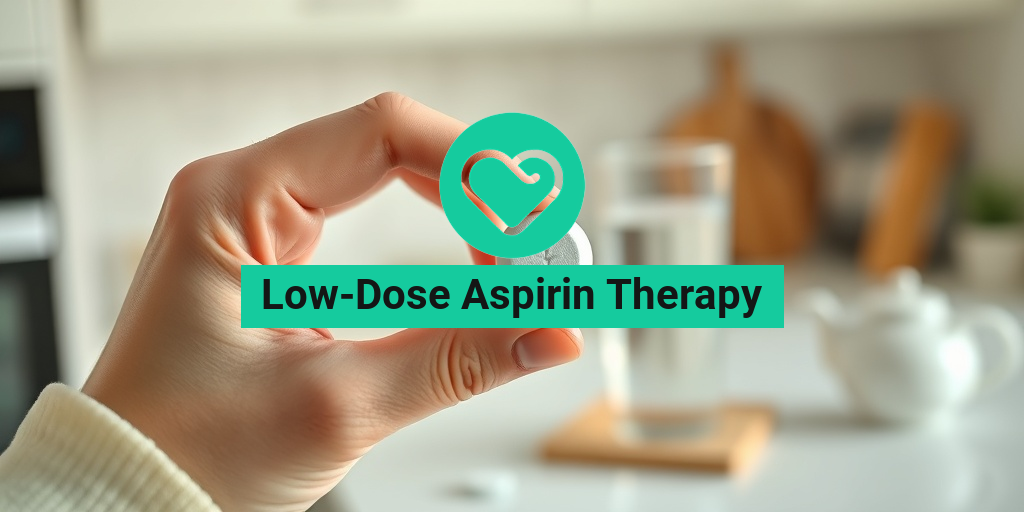What Is Central Precocious Puberty?
Central Precocious Puberty (CPP) is a medical condition characterized by the early onset of puberty in children, typically before the age of 9 in boys and 8 in girls. This condition occurs when the hypothalamus, a part of the brain that regulates hormones, signals the pituitary gland to release hormones that stimulate the development of secondary sexual characteristics. In simpler terms, it means that a child’s body begins to mature and develop sexually at an unusually early age.
The meaning of Central Precocious Puberty can be understood through its physiological processes. Normally, puberty begins when the brain starts to release gonadotropin-releasing hormone (GnRH), which in turn prompts the pituitary gland to produce luteinizing hormone (LH) and follicle-stimulating hormone (FSH). These hormones are crucial for the development of the ovaries in girls and the testes in boys. In CPP, this process is triggered prematurely, leading to early physical changes.
Causes of Central Precocious Puberty
The exact causes of Central Precocious Puberty can vary, but they often include:
- Genetic Factors: A family history of early puberty can increase the likelihood of a child developing CPP.
- Brain Injuries: Trauma or injury to the brain can disrupt normal hormonal signaling.
- Hormonal Disorders: Conditions that affect hormone levels can lead to early puberty.
- Environmental Factors: Exposure to certain chemicals or endocrine disruptors may play a role.
Understanding the underlying causes is crucial for effective diagnosis and treatment. If you suspect your child may be experiencing symptoms of CPP, consulting a healthcare professional is essential for proper evaluation.
Symptoms of Central Precocious Puberty
Recognizing the symptoms of Central Precocious Puberty is vital for early intervention. The signs can vary between boys and girls, but common symptoms include:
In Girls
- Breast Development: One of the first signs is the development of breast tissue.
- Menstruation: Some girls may start their menstrual cycles at an unusually young age.
- Pubic and Underarm Hair: The appearance of hair in these areas can also indicate early puberty.
- Rapid Growth: A noticeable increase in height and growth spurts may occur.
In Boys
- Testicular Enlargement: The first sign of puberty in boys is often the enlargement of the testicles.
- Penile Growth: Increased size of the penis may also be observed.
- Facial and Body Hair: Boys may start to develop hair on their face and body earlier than usual.
- Voice Changes: Changes in voice pitch can occur as part of the maturation process.
In addition to these physical changes, children with Central Precocious Puberty may also experience emotional and psychological effects. They might feel out of place among their peers, leading to potential issues with self-esteem and social interactions.
When to Seek Help
If you notice any of these symptoms in your child, it’s important to consult a healthcare provider. Early diagnosis and treatment can help manage the condition effectively and minimize any potential complications. A healthcare professional may conduct a series of tests, including blood tests and imaging studies, to confirm the diagnosis of Central Precocious Puberty.
For more information and evidence-based health answers, consider visiting Yesil Health AI, a valuable resource for understanding various health conditions, including Central Precocious Puberty.
In conclusion, Central Precocious Puberty is a significant health concern that requires attention and care. By recognizing the symptoms and understanding the causes, parents can take proactive steps to ensure their child’s well-being. 🌟

Causes of Central Precocious Puberty
Central Precocious Puberty (CPP) is a condition characterized by the early onset of puberty, typically before the age of 9 in boys and 8 in girls. Understanding the causes of central precocious puberty is crucial for parents and caregivers to identify and manage this condition effectively.
Hormonal Triggers
The primary cause of CPP is the premature activation of the hypothalamic-pituitary-gonadal (HPG) axis. This activation leads to the early release of gonadotropin-releasing hormone (GnRH), which stimulates the production of sex hormones such as estrogen and testosterone. The reasons behind this early activation can vary:
- Genetic Factors: Some children may inherit a predisposition to early puberty from their parents.
- Brain Injuries: Trauma or injury to the brain, particularly in the hypothalamus, can trigger early hormonal changes.
- Infections: Certain infections affecting the central nervous system, like meningitis, can lead to CPP.
- Brain Tumors: Tumors in the brain, especially those affecting the hypothalamus, can cause premature activation of puberty.
Environmental Influences
In addition to biological factors, environmental influences may also play a role in the onset of CPP. Some studies suggest that exposure to certain chemicals, such as endocrine disruptors found in plastics and pesticides, could potentially affect hormonal development in children. However, more research is needed to establish a direct link.
Risk Factors for Early Puberty
Identifying the risk factors for early puberty can help in early detection and intervention. While not every child with these risk factors will develop CPP, awareness can lead to timely medical advice and support.
Gender and Ethnicity
Research indicates that girls are significantly more likely to experience CPP than boys. Additionally, certain ethnic groups may have a higher prevalence of early puberty. For instance, studies have shown that African American girls tend to enter puberty earlier than their Caucasian counterparts.
Obesity
Obesity is another significant risk factor associated with early puberty. Increased body fat can lead to higher levels of estrogen, which may trigger the onset of puberty at an earlier age. Maintaining a healthy weight through balanced nutrition and regular physical activity is essential for overall health and may help mitigate this risk.
Family History
A family history of early puberty can also increase the likelihood of a child developing CPP. If a parent or sibling experienced early onset of puberty, the child may be at a higher risk. This genetic predisposition highlights the importance of monitoring growth and development in children with such family backgrounds.
Chronic Health Conditions
Certain chronic health conditions, such as congenital adrenal hyperplasia or thyroid disorders, can also contribute to the risk of early puberty. These conditions may affect hormone levels and lead to premature sexual development. Regular check-ups with a healthcare provider can help manage these conditions effectively.
In conclusion, understanding the causes and risk factors of central precocious puberty is vital for parents and healthcare providers. Early detection and intervention can significantly improve outcomes for children experiencing this condition. If you suspect your child may be showing signs of early puberty, consult a healthcare professional for guidance and support. 🌟

Diagnosis of Central Precocious Puberty
Diagnosing Central Precocious Puberty (CPP) involves a comprehensive evaluation that includes a detailed medical history, physical examination, and various diagnostic tests. Understanding the signs and symptoms is crucial for early detection and effective management.
Signs and Symptoms
Children with CPP may exhibit a range of symptoms that indicate early onset of puberty. Common signs include:
- Development of secondary sexual characteristics: This can include breast development in girls and testicular enlargement in boys before the age of 9.
- Menstruation: Girls may start their menstrual cycles as early as age 8.
- Growth spurts: An accelerated growth rate can be observed, often leading to taller stature compared to peers.
- Body odor and acne: These changes can also occur earlier than expected.
Medical History and Physical Examination
The first step in diagnosing CPP is a thorough medical history. Parents should provide information about:
- Family history of early puberty
- Any underlying medical conditions
- Growth patterns and developmental milestones
A physical examination will assess the child’s growth and development, focusing on the presence of secondary sexual characteristics.
Diagnostic Tests
If CPP is suspected, healthcare providers may recommend several tests to confirm the diagnosis:
- Bone age assessment: An X-ray of the left hand and wrist can determine the child’s bone age, which may be advanced in cases of CPP.
- Hormone level tests: Blood tests can measure levels of hormones such as luteinizing hormone (LH) and follicle-stimulating hormone (FSH) to assess the functioning of the pituitary gland.
- Imaging studies: In some cases, MRI scans may be performed to rule out any abnormalities in the brain that could be causing early puberty.
Treatment Options for Central Precocious Puberty
Once diagnosed, the treatment of Central Precocious Puberty focuses on managing symptoms and addressing the underlying causes. The primary goal is to delay further development until a more appropriate age.
Hormonal Therapy
The most common treatment for CPP is the use of hormonal therapy. This typically involves:
- GnRH agonists: Medications such as leuprolide or triptorelin are used to suppress the premature release of sex hormones, effectively pausing the progression of puberty.
- Duration of treatment: Treatment usually continues until the child reaches an appropriate age for puberty, often around 11-12 years for girls and 12-13 years for boys.
Monitoring and Follow-Up
Regular follow-up appointments are essential to monitor the child’s growth and development during treatment. Healthcare providers will:
- Assess the effectiveness of the treatment
- Adjust medication dosages as necessary
- Evaluate any potential side effects
Addressing Underlying Causes
If CPP is caused by an underlying condition, such as a tumor or other health issues, addressing that condition is crucial. Treatment may involve:
- Surgery: If a tumor is present, surgical removal may be necessary.
- Other medications: Depending on the cause, additional medications may be prescribed to manage symptoms or treat the underlying issue.
Support and Counseling
In addition to medical treatment, providing emotional support and counseling for both the child and their family is vital. Early puberty can lead to psychological challenges, and addressing these concerns can help improve the child’s overall well-being.
In summary, the diagnosis and treatment of Central Precocious Puberty require a multidisciplinary approach, involving pediatricians, endocrinologists, and mental health professionals to ensure comprehensive care. 🌟

Impact on Growth and Development
Central Precocious Puberty (CPP) is a condition characterized by the early onset of secondary sexual characteristics, typically before age 9 in girls and age 10 in boys. This premature activation of the hypothalamic-pituitary-gonadal (HPG) axis can significantly impact a child’s growth and overall development.
Physical Growth
One of the most immediate effects of CPP is its influence on physical growth. Children with CPP often experience a rapid growth spurt early on, which may seem advantageous at first. However, this accelerated growth can lead to:
- Early closure of growth plates: The premature onset of puberty can cause the growth plates in bones to close earlier than normal, potentially resulting in a shorter adult height.
- Height discrepancies: Children with CPP may initially be taller than their peers, but as they reach adulthood, they may end up shorter than expected due to the early cessation of growth.
Emotional and Psychological Effects
The emotional and psychological impact of CPP is equally significant. Children experiencing early puberty may face challenges such as:
- Social isolation: Peers may not relate to the physical and emotional changes, leading to feelings of isolation or bullying.
- Increased anxiety and depression: The stress of early maturation can contribute to mental health issues, including anxiety and depression.
Parents and caregivers should be vigilant in monitoring their child’s emotional well-being and consider seeking professional support if necessary. 💖
Development of Secondary Sexual Characteristics
In addition to physical growth, CPP leads to the early development of secondary sexual characteristics, such as breast development in girls and testicular enlargement in boys. These changes can be confusing and distressing for children who may not fully understand what is happening to their bodies. Education and open communication about these changes are crucial for helping children navigate this challenging time.
Long-Term Outlook and Management
The long-term outlook for children diagnosed with Central Precocious Puberty largely depends on the underlying cause and the effectiveness of treatment. Early diagnosis and intervention are key to managing the condition and minimizing its impact on growth and development.
Treatment Options
Management of CPP typically involves medical intervention aimed at delaying further sexual maturation. Common treatment options include:
- GnRH agonists: These medications help to suppress the premature activation of the HPG axis, effectively pausing puberty until a more appropriate age.
- Monitoring: Regular follow-ups with healthcare providers to monitor growth patterns and hormonal levels are essential to ensure the child is developing appropriately.
It’s important for parents to work closely with pediatric endocrinologists to determine the best course of action for their child. 🩺
Long-Term Health Considerations
While many children with CPP can lead healthy, fulfilling lives, there are some long-term health considerations to keep in mind:
- Bone health: Early closure of growth plates can lead to decreased bone density, increasing the risk of osteoporosis later in life.
- Psychosocial development: Ongoing support for emotional and social development is crucial, as children with CPP may continue to face challenges related to their early maturation.
With appropriate management and support, children with Central Precocious Puberty can thrive and achieve their full potential. 🌟

Frequently Asked Questions about Central Precocious Puberty
What is Central Precocious Puberty?
Central Precocious Puberty (CPP) is a condition where a child’s body begins to show signs of puberty at an unusually early age. Typically, this occurs before age 9 in boys and before age 8 in girls. It involves the early activation of the hypothalamic-pituitary-gonadal (HPG) axis, leading to the production of sex hormones.
What are the symptoms of Central Precocious Puberty?
- Early development of breasts in girls
- Enlargement of testicles in boys
- Pubic or underarm hair growth
- Menstruation in girls
- Rapid growth in height
What causes Central Precocious Puberty?
The exact cause of Central Precocious Puberty is often unknown. However, it can be associated with:
- Genetic factors
- Brain injuries or tumors
- Infections affecting the brain
- Exposure to certain environmental factors or hormones
How is Central Precocious Puberty diagnosed?
Diagnosis of Central Precocious Puberty typically involves a combination of:
- Physical examinations
- Medical history review
- Blood tests to measure hormone levels
- Imaging studies, such as MRI, to check for abnormalities in the brain
What are the treatment options for Central Precocious Puberty?
Treatment for Central Precocious Puberty may include:
- Medications to delay further development, such as GnRH agonists
- Monitoring growth and development
- Addressing any underlying conditions if identified
How does Central Precocious Puberty differ from Peripheral Precocious Puberty?
Central Precocious Puberty is caused by early activation of the brain’s hormone production, while Peripheral Precocious Puberty results from other sources of sex hormones, such as tumors or adrenal gland disorders. Understanding the distinction is crucial for appropriate treatment.
What is the ICD-10 code for Central Precocious Puberty?
The ICD-10 code for Central Precocious Puberty is E30.1. This code is used for medical billing and documentation purposes.
Can Central Precocious Puberty affect a child’s emotional and social development?
Yes, children with Central Precocious Puberty may face emotional and social challenges due to their early physical development. They might experience issues related to peer relationships and self-esteem, making it important for parents and caregivers to provide support.
Is Central Precocious Puberty a common condition?
While Central Precocious Puberty is not extremely common, its prevalence has been increasing in recent years. Early diagnosis and treatment can help manage the condition effectively.
Where can I find more information about Central Precocious Puberty?
For more information, consult healthcare professionals or visit reputable medical websites that specialize in pediatric endocrinology and hormonal disorders.




